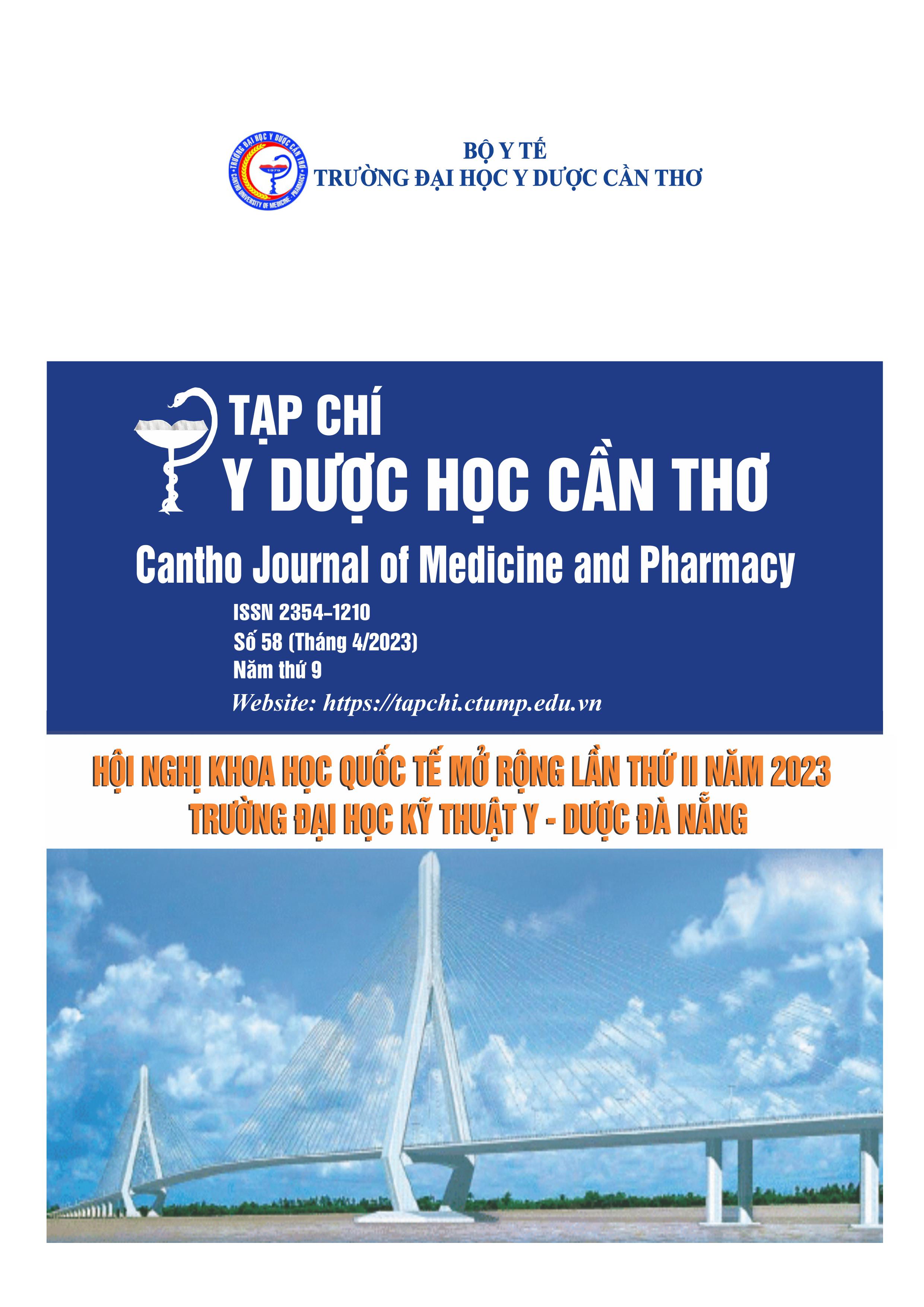EVALUATION OF IMPLANT TREATMENT WITH BONE GRAFTING IN PARTIALLY MAXILARY EDENTULOUS PATIENTS
Main Article Content
Abstract
Background: Implant with bone graft is the most advanced and popular method of restoring tooth loss today, but there is a lack of clinical research and results. This study aims to evaluate implant treatment with bone grafting Objective: To assess the result of implant treatment with bone grafting in partially edentulous patients. Materials and method: The study was performed on 41 partially maxillary edentulous patients who were treated with implant placement at Da Nang hospital of Odonto-Stomatology. The implant survival, complications and rehabilitation were evaluated as criteria for success. Results: There were no implant failures. The success of chewing and aesthetic rehabilitation was at 97.2% and 93% respectively. Implant complications was pain (67.6%), swelling (53.5%) and wound unhealing (8.5%). Conclusion: Implants with bone grafting in partially maxillary edentulous patients can be considered as a safe treatment in oral rehabilitation of patients.
Article Details
Keywords
Implant, bone graft, patients
References
2. Franco Santoro, Carlo Mariorana (2005), “Advanced osseointegration in the aesthetic areas”, Advanced osseointegration, pp. 196-231
3. Jemt T. (1997), “Regeneration of gingival papillae after single-implant treatment”, Int J Periodontics Restorative Dent., 17(4), pp.326-333.
4. Kahraman S, Bal BT, Asar NV, et al. (2009), “Clinical study on the insertion torque and wireless resonance frequency analysis in the assessment of torque capacity and stability of self-tapping dental implants”, J Oral Rehabil., 36(10), pp. 755-761.
5. Kourtis S.G., Sotiriadou S., Voliotis S., Challas A. (2004), “Private practice results of dental implants. Part I: survival and evaluation of risk factors - Part II: surgical and prosthetic complications”, Implant Dent, 13(4), 373-8.
6. Mombelli A., Lang N.P. (1992), “Antimicrobial treatment of peri-implant infections”, Clin Oral Implants Res, 3(4), 162-8.
7. Moon-Sun Kim, Jae-Kwan Lee, Heung-Sik Um., et al. (2011), “Masticatory function following implants replacing a second molar”, J Periodontal Implant Sci, 41, pp. 79-85.
8. Nadine Brodala, Med Dent (2009), “Flapless surgery and its effect ondental implant outcomes”, Int J Oral Maxillofac Implants 2, 24, pp. 118-125.
9. Raes F., Cosyn J., De Bruyn H. (2012), Clinical, Aesthetic, and Patient- Related Outcome of Immediately Loaded Single Implants in the Anterior Maxilla: A Prospective Study in Extraction Sockets, Healed Ridges, and Grafted Sites. Clin Implant Dent Relat Res.
10. Salvatore Longoni, MatteoSartori, Marc Braun (2007), “Lingual vascular canals of the mandible: the risk of bleeding complications during implant procedures”, Implant Dent, 16, pp. 131-138.
11. Sammartino G., Marenzi G., di Lauro A.E., et al. (2007), “Aesthetics in oral implantology: Biological, clinical, surgical, and prosthetic aspects”, Implant Dent, 16(1), pp. 54-65.
12. Silness J., Loe H. (1964), “Periodontal disease in pregnancy: Correlation between oral hygiene and periodontal condition”, Acta Odontol Scand, 22, pp. 121-35.


